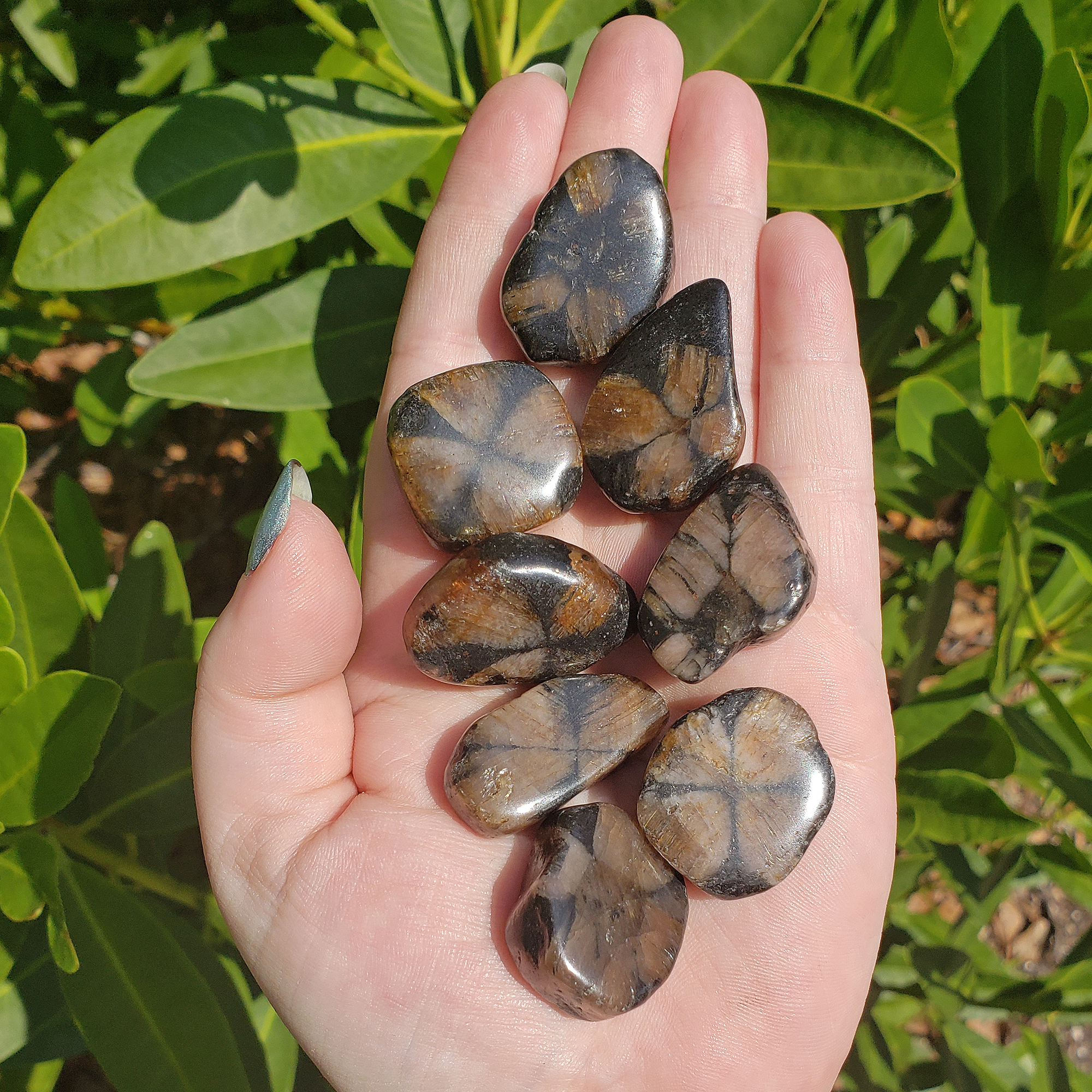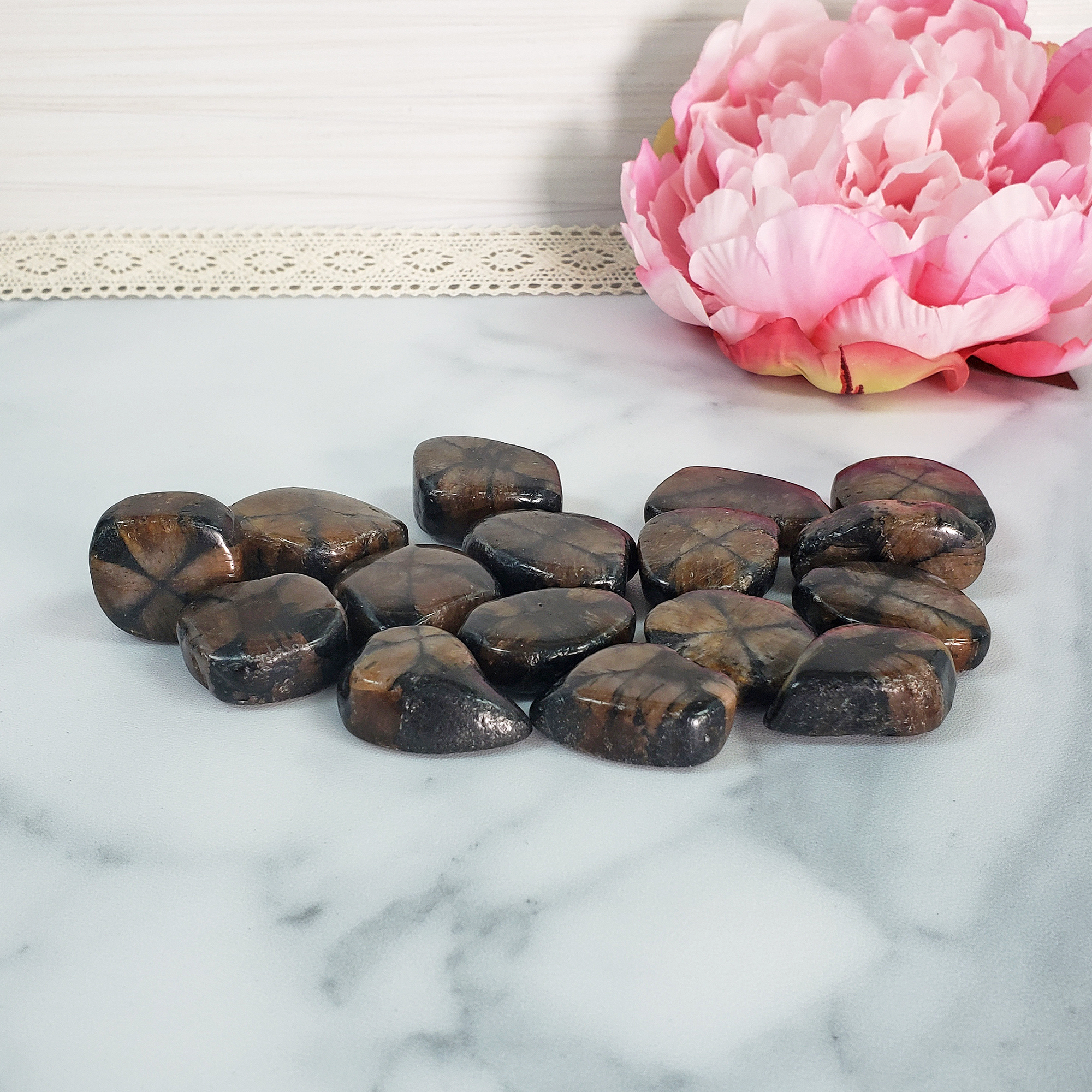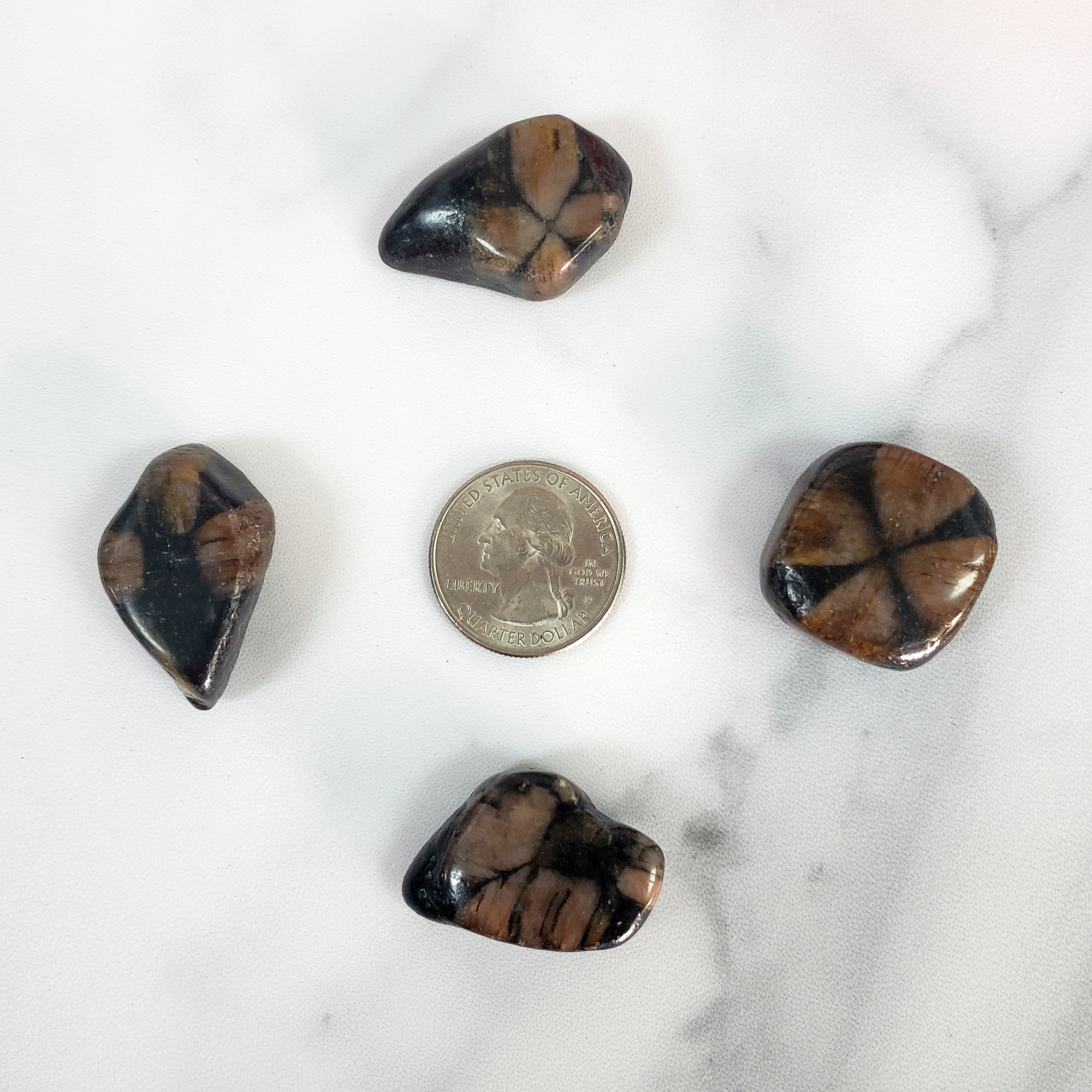What is Andalusite? What is Chiastolite?
Andalusite (sometimes called Andalousite, Andaluzite, or Apyre) is a natural gemstone found in many shades, but commonly ranging from pinkish-mauve to reddish brown. It is a polymorph of Kyanite and Sillimanite. Very basically, mineral polymorphism means that the stones have the same chemical composition but have formed different structures, resulting in different appearances. For ease of reference, think of polymorphic minerals like siblings: They come from the same basic building blocks, but are still unique and compelling individuals in their own right. When Andalusite stone features carbon inclusions creating the shape of a cross or compass points, it will commonly be referred to as Chiastolite (aka: Lapis Crucifer, Crucite, Cross Stone, Chyastolith, Macle, or Maltesite). The name Chiastolite from the Greek: chiastos, meaning "cross", is pronounced with a hard C ( Ky-ass-toh-lyte ). These striking patterns make Chiastolite perfect for jewelry making projects.
The Metaphysical Properties of Andalusite Chiastolite
Andalusite's spiritual gifts make it a gemstone often called upon when seeking protection, guidance, comfort, and spiritual growth. Since it resonates with strong, positive energies, Andalusite is known for balancing the entire Chakral column, although it is most associated with the Root Chakra and Crown Chakra, and is used in emotional healing to encourage self confidence, happiness, and the removal of blockages. The meaning of Andalusite is in lifting us up from the challenges that surround us, so it is often carried by those seeking signs, protection, and blessings from the universe. Chiastolite Andalusite kept by the bedside is said to offer protection from nightmares, evil eyes, and psychic attacks while opening the mind to prophetic dreaming and spiritual guidance.
How to Cleanse Chiastolite Andalusite
We always advise charging and cleansing crystals using Selenite or the Full Moon, as these options will not cause any damage to any kind of stone. Smoke Cleansing with Sage, Incense, or dried herbs are other safe methods for removing stagnant or negative energies from your crystals. A Dry Salt Bath is also a good cleansing method to use for this gem.
Andalusite has a Mohs hardness of approximately 6.5 - 7.5, but because Chiastolite Andalusite specimens contain their characteristic carbon inclusions, their Mohs hardness can range from 5 to 7.5. It goes without saying that this is a somewhat wider range, so we don't advise long-term submersion of Chiastolite stones as a method for cleansing. A quick dunk or wiping with a damp cloth will not hurt, but leaving your Chiastolite in liquid longterm can soften the stone, making it easier to scratch or break.




















